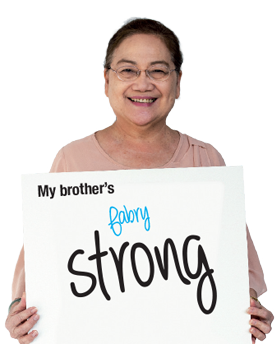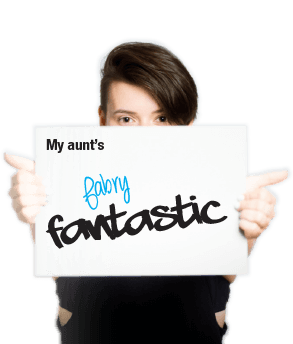Every family with Fabry has a story to tell
What role can you play in your family’s Fabry story?
Welcome.
This website is designed to help individuals diagnosed with Fabry disease identify and reach out to relatives who may be at risk of Fabry.
Why is it important to talk to your family about Fabry?
On average, for every person with Fabry, at least five other members of their family can also be diagnosed with the condition based on an analysis of their family tree.1
This means that if you have Fabry, you could have children, parents, siblings, aunts, uncles, or cousins that also have Fabry but don’t yet know.
You could help them.
By telling them about their risk of Fabry, you could potentially help them avoid a long and difficult journey to diagnosis.1-3 Also, early diagnosis and timely treatment could potentially lead to a healthier future. 4-6
So, what should you do if you want to help?
Step 1:
Work out who may be at risk of Fabry
On this website, you will find "The Fabry Family Tree Builder" online tool. It can help you create your family tree, and automatically highlight members who may potentially be at risk of Fabry. Your doctor can help you complete this or, if you prefer, you can complete it alone.
Step 2:
Talk to your at-risk family members about Fabry
Once you know who may potentially be at risk, it’s time to tell them about Fabry. There is no such thing as an average family and talking about Fabry is no different. There is no correct way to go about it – use a method of communicating that you are comfortable with.
In the resource section, you will find a pamphlet you can send to your potentially at-risk family members ("Your family & Fabry"). There is also an example letter if you want to write to them but can’t find the right words – you can send it as it is or use it to help you write your own.
Click here for more information on what to tell your at-risk relatives >
References
1. Laney DA & Fernhoff PM. J Genet Counsel 2008;17:79–83; 2. Germain D. Orphanet J Rare Dis 2010;5:30; 3. Hilz MJ et al. Dig Liver Dis 2018;50:429–37; 4. Germain DP et al. Clin Genet 2019;96:107–17; 5. Mehta A & Hughes DA. Fabry disease. GeneReviews®. Available at: https://www.ncbi.nlm.nih.gov/books/NBK1292/ (Last accessed March 2025); 6. Ortiz A et al. Mol Genet Metab 2018;123:416–27




